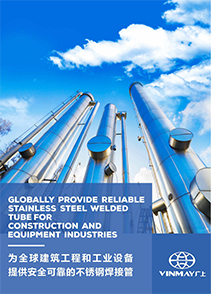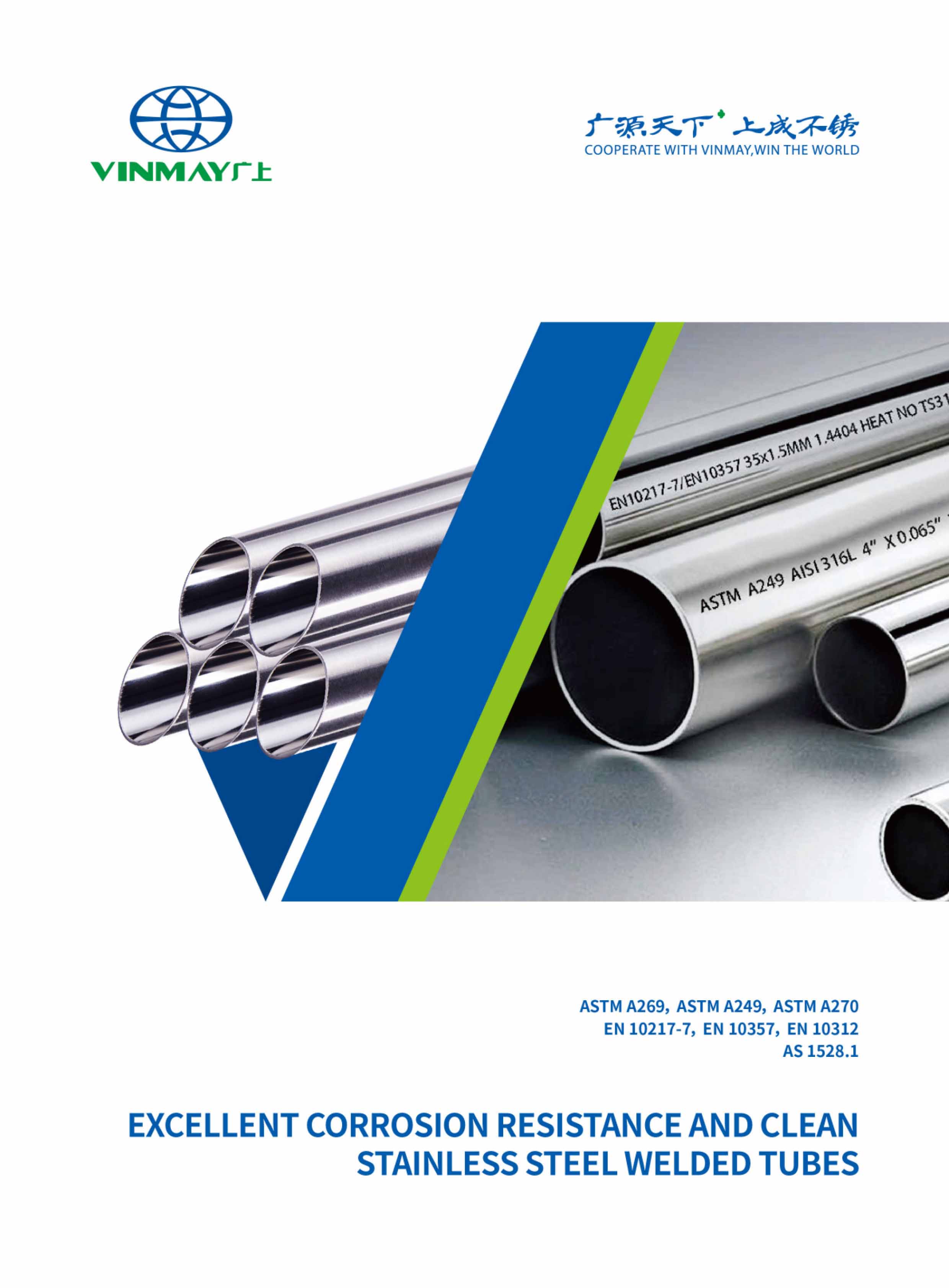316 stainless steel tubes are characterized by impressive mechanical properties, including a typical tensile strength of 90,000 psi and a yield strength of approximately 85,000 psi. They exhibit significant elongation at break, ranging from 40% to 50%, allowing for substantial plastic deformation. The alloy's molybdenum content enhances strength and corrosion resistance, particularly in challenging environments. Hardness values average around 150 to 163 Brinell. Additionally, the material's austenitic structure ensures superior impact resistance. These formidable mechanical properties make 316 stainless steel tubes ideal for demanding applications across various industries, offering reliable performance in extreme conditions. Further insights await regarding their applications and comparisons.

316 stainless steel tube is a high-performance material characterized by its exceptional corrosion resistance and mechanical strength, making it suitable for demanding environments.
It demonstrates remarkable heat resistance and durability, which are critical for applications in marine and chemical industries.
Additionally, its fabricability allows for versatile use in various structural and industrial applications, ensuring reliability and longevity.
Renowned for its exceptional corrosion resistance, the 316 stainless steel tube is specifically engineered to withstand harsh environments, making it an ideal choice for applications in marine, chemical, and food processing industries. The alloy's composition, which includes molybdenum, significantly enhances its ability to resist pitting and crevice corrosion in chloride-laden environments.
Effective corrosion prevention strategies are essential, particularly in settings exposed to aggressive environmental factors such as saltwater or acidic chemicals. Surface treatments, including passivation and electropolishing, further bolster the tube's resistance by creating a protective layer that minimizes the impact of chemical exposure.
While 316 stainless steel offers superior corrosion resistance, it is crucial to acknowledge that maintenance requirements remain relevant. Regular inspections can help identify early signs of degradation, ensuring the integrity and longevity of the material.
The 316 stainless steel tube mechanical properties are key factors that enhances their suitability for demanding applications, particularly in environments where both structural integrity and resistance to mechanical stress are required. This grade of stainless steel exhibits impressive yield strength and elongation properties, making it ideal for heavy-load scenarios.
Applications Overview: 316 stainless steel tubes are commonly utilized in marine, chemical processing, and food service industries due to their remarkable strength and corrosion resistance.
Environmental Impact: The use of 316 stainless steel reduces the need for frequent replacements, thereby minimizing waste and environmental degradation.
Cost Comparison: While initially more expensive than lower-grade alternatives, the long-term savings in maintenance and durability justify the investment in 316 stainless steel tubes.
For optimal performance, regular maintenance is advised, including inspections for wear and ensuring proper environmental conditions are maintained.
As market trends shift towards sustainability, the demand for robust materials like 316 stainless steel is expected to rise, reinforcing its position as a preferred choice for engineers and procurement professionals alike.
What characteristics contribute to the durability of stainless steel tubes made from the 316 grade? The 316 stainless steel tube is renowned for its exceptional corrosion resistance, particularly in marine and chemical environments. This durability is attributed to its alloying elements, notably molybdenum, which enhances resistance to localized corrosion. Additionally, its mechanical strength and elongation properties provide reliability under heavy-load scenarios, making it an ideal choice in demanding applications.
The adherence to sustainability practices in the production of 316 stainless steel tubes reflects the industry's commitment to reducing environmental impact. Manufacturing innovations, such as advanced fabrication techniques, further enhance the performance and longevity of these tubes.
Industry trends indicate an increasing market demand for durable materials, backed by comprehensive cost analysis reflecting the long-term savings associated with reduced maintenance and replacement needs.
| Property | Value | Significance |
|---|---|---|
| Corrosion Resistance | High | Ideal for harsh environments |
| Yield Strength | 90k psi | Supports heavy-load applications |
| Elongation | Excellent | Enhances reliability |
| Sustainability Practices | Adopted | Minimizes environmental impact |
Heat resistance is a significant characteristic of 316 stainless steel tubes, making them suitable for applications exposed to elevated temperatures where structural integrity and performance must be maintained.
This alloy effectively withstands thermal expansion and exhibits superior thermal conductivity, which is essential in high temperature applications. The inclusion of molybdenum in its composition enhances its resistance to oxidation and scaling, ensuring longevity and reliability in extreme conditions.
Key aspects of 316 stainless steel tubes related to heat resistance include:
Heat Treatment: Allows for optimization of mechanical properties, enhancing the alloy's performance under thermal stress.
Thermal Expansion: The alloy maintains dimensional stability, preventing warping or deformation.
Heat Resistant Alloys: 316 stainless steel fits within this category, making it suitable for high-temperature environments.
In industrial settings, 316 stainless steel tubes are employed in processes that require consistent performance in the face of fluctuating temperatures.
Their ability to retain strength and resist degradation under thermal stress underscores their value in critical applications, affirming their position as a preferred material in demanding environments.
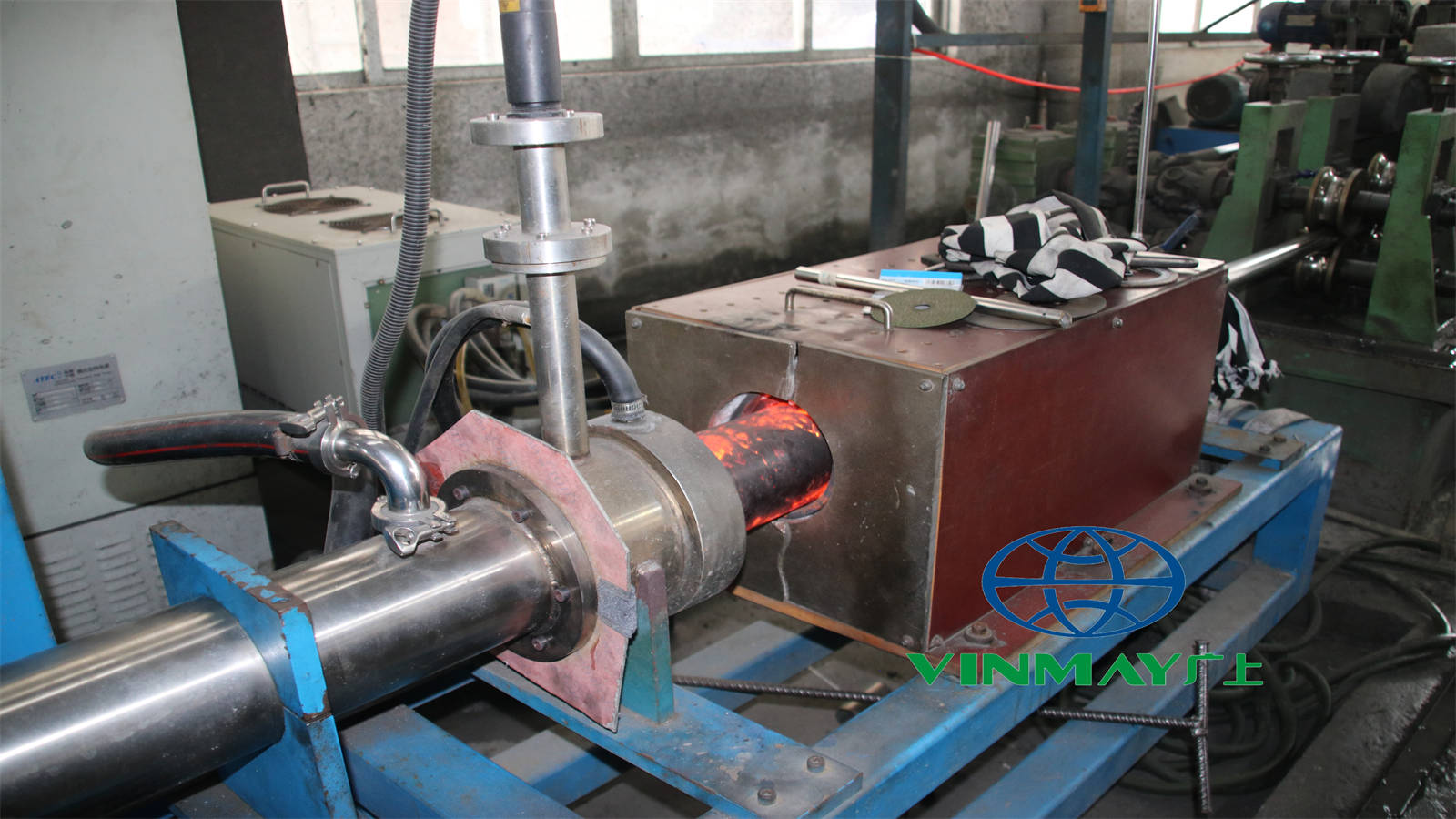
316 stainless steel tubes are recognized for their excellent fabricability, enabling efficient processing and adaptability for various industrial applications. Their austenitic structure facilitates a range of welding techniques, including TIG and MIG, which are essential for achieving robust joints without compromising corrosion resistance.
However, fabrication challenges may arise, particularly in maintaining optimal surface finish and avoiding contamination during machining processes.
The low carbon variant, 316L, is particularly valued in applications requiring stringent corrosion testing and minimizing carbide precipitation during welding. This characteristic enhances the material's performance in aggressive environments, aligning with prevailing application trends in marine, chemical processing, and pharmaceutical industries.
Moreover, the machinability of 316 stainless steel is influenced by factors such as cutting speed, tool selection, and lubrication, necessitating specialized tools to mitigate wear and ensure precision.
As industries increasingly demand materials that combine durability and adaptability, 316 stainless steel tubes stand out, reflecting a commitment to quality and innovation in fabrication practices. Thus, understanding the fabricability of this material is crucial for engineers and fabricators striving to meet evolving industry standards and project requirements.
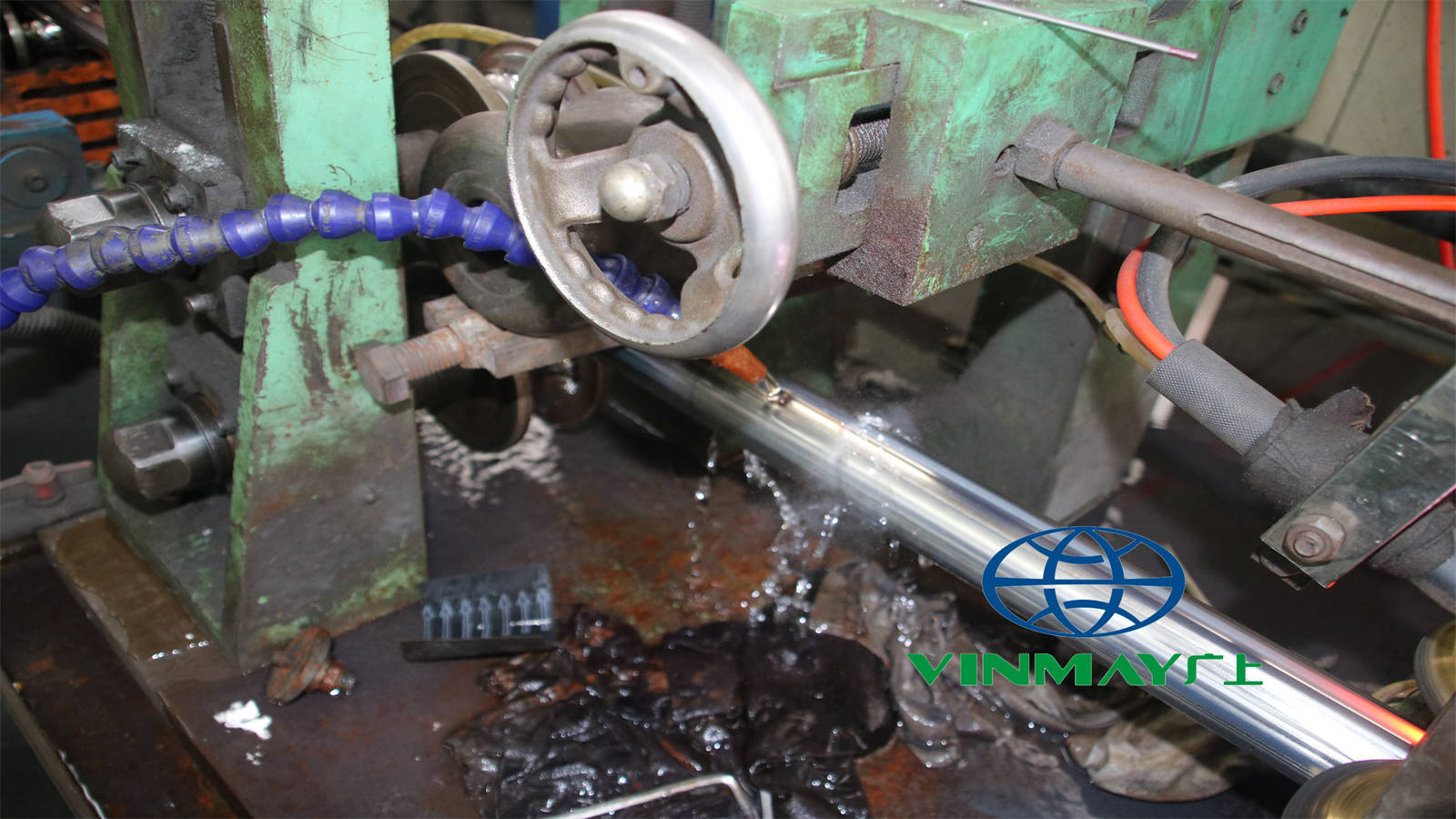
The 316 stainless steel tube mechanical properties are critical for evaluating their performance in various applications.
Key metrics include tensile strength, yield strength, elongation at break, Brinell hardness, and modulus of elasticity, each providing insight into the material's capability to withstand mechanical stress.
Understanding these properties is essential for selecting the appropriate stainless steel tube for demanding environments.
Characterized by its robust 316 stainless steel tube mechanical properties, the tensile strength of 316 stainless steel tube typically reaches approximately 90,000 psi, making it well-suited for demanding structural applications. This exceptional strength is essential in a variety of tube applications, particularly where stress analysis and durability are paramount.
Tensile testing confirms that 316 stainless steel exhibits remarkable resistance to deformation under load, ensuring reliability in harsh environments.
Key factors contributing to the tensile strength of 316 stainless steel tube include:
Corrosion Mechanisms: Enhanced resistance to pitting and crevice corrosion, particularly in chloride environments.
Manufacturing Techniques: Cold working and heat treatments can significantly improve mechanical properties and overall strength.
Applications: Ideal for industries such as marine, chemical processing, and food service, where both strength and corrosion resistance are crucial.
Understanding these properties enables engineers to make informed decisions regarding material selection and application, fostering a sense of belonging among professionals committed to high-quality standards in their respective fields.

Yield strength for 316 stainless steel tube typically measures around 85,000 psi, illustrating its ability to withstand significant loads without permanent deformation. This 316 stainless steel tube mechanical properties are influenced by various yield strength factors, including the material's composition and the specific stainless steel pipe manufacturing processes employed. For instance, variations in cold working can enhance yield strength, making the material suitable for demanding structural applications.
In stress analysis, the yield strength of 316 stainless steel is critical for predicting how the material will perform under load, particularly in environments subject to cyclic stress or corrosion. Compared to other stainless steel alloys, such as 304, 316 exhibits superior yield strength due to its molybdenum content, which contributes to increased resistance against localized corrosion.
When selecting materials for structural applications, understanding yield strength and its contributing factors is essential for ensuring safety and performance. Alloy comparisons reveal that 316 stainless steel's robust mechanical properties make it particularly advantageous in marine and chemical environments, where reliability under stress is paramount.
This information fosters a deeper understanding of material choices, encouraging informed decision-making within engineering and design communities.
Elongation at break for 316 stainless steel tube typically measures around 40% to 50%, indicating its capacity to undergo significant plastic deformation before fracturing, which is crucial for applications requiring flexibility and toughness. This property is influenced by various elongation factors, including the material's microstructure and composition, which can vary across different grades of stainless steel.
Testing methods for elongation at break must adhere to industry standards to ensure accuracy and reproducibility. Common approaches include tensile testing, where specimens are subjected to controlled stress until failure.
Key considerations include:
Material Comparisons: Understanding how 316 compares to other stainless steel grades can inform material selection for specific applications.
Application Challenges: Engineers must consider environmental factors, such as temperature and corrosive agents, that impact elongation performance in real-world scenarios.
Quality Assurance: Regular testing and adherence to industry standards are essential for maintaining the reliability of stainless steel tubes in critical applications.
These insights into elongation at break underscore its importance in the design and selection of materials for demanding environments.
Employing the Brinell hardness test, 316 stainless steel tubes typically exhibit a hardness of 163 for sheet forms and 150 for plate forms, reflecting their robust mechanical properties essential for demanding applications. Hardness testing is a critical component in assessing the suitability of materials for various industrial applications, ensuring that they meet specified performance criteria.
The hardness values of 316 stainless steel indicate strong resistance to deformation under load, making it a preferred choice in sectors requiring high durability. These values align with material specifications that prioritize mechanical strength and corrosion resistance, crucial for environments such as marine and chemical processing.
When comparing performance across different fabrication techniques, the hardness of 316 stainless steel allows for enhanced machining and forming, ensuring reliability in construction and manufacturing processes. Furthermore, understanding the hardness levels aids engineers and designers in selecting appropriate materials that not only fulfill structural requirements but also withstand operational stresses.
The modulus of elasticity for 316 stainless steel tubes is a key mechanical property that quantifies the material's ability to deform elastically under stress, providing insight into its stiffness and overall structural integrity.
This property is essential in determining how the material will perform under various loading conditions, particularly when assessing its elastic limits.
The modulus of elasticity can vary based on several factors, including temperature effects and the specific loading conditions experienced by the material.
Understanding the modulus variation allows engineers to predict the stress response of the stainless steel tube in real-world applications.
Crucial for design calculations in structural applications.
Influences the performance of components under dynamic conditions.
Affects the overall durability and lifespan of the material.
In applications where 316 stainless steel is subjected to varying temperatures or mechanical loads, it is vital to consider these aspects of the modulus of elasticity.
This knowledge aids in ensuring that the material maintains its integrity and performance over time, fulfilling the expectations of both engineers and end-users in demanding environments.
Impact resistance is a critical mechanical property of 316 stainless steel tubes, determining their ability to withstand sudden forces or shocks without fracturing, which is essential for applications in demanding environments. Evaluating impact resistance involves rigorous impact testing, where samples are subjected to controlled dynamic loading conditions to assess material toughness and fracture resistance.
316 stainless steel exhibits superior toughness compared to other alloys, primarily due to its austenitic structure, which confers enhanced ductility and energy absorption capabilities. Stress analysis during impact scenarios reveals that the material can effectively redistribute applied loads, minimizing the risk of catastrophic failure.
The presence of molybdenum in the alloy composition further enhances its resistance to stress-induced corrosion cracking, a critical factor in environments exposed to extreme pressures or temperatures.
As a result, 316 stainless steel tubes are often the preferred choice in industries such as marine, chemical processing, and construction, where the integrity of structural components is paramount. Understanding and optimizing the impact resistance of these tubes ensures reliability and safety in their intended applications, fostering confidence among engineers and stakeholders alike.
Due to its superior mechanical properties, 316 stainless steel tubes are extensively utilized across various demanding applications, particularly in environments where strength and corrosion resistance are paramount. The exceptional performance metrics of these tubes align with industry trends, reflecting a growing market demand for materials that can withstand harsh conditions.
The applications overview for 316 stainless steel tubes includes:
Marine Industry: Resistant to saltwater corrosion, making it ideal for shipbuilding and offshore structures.
Chemical Processing: Capable of handling aggressive chemicals, ensuring safety and reliability in plant operations.
Food and Pharmaceutical Industries: Essential for maintaining hygiene and purity standards in equipment and containers.
Discover More :
Diverse Applications of Sanitary Stainless Steel Pipe
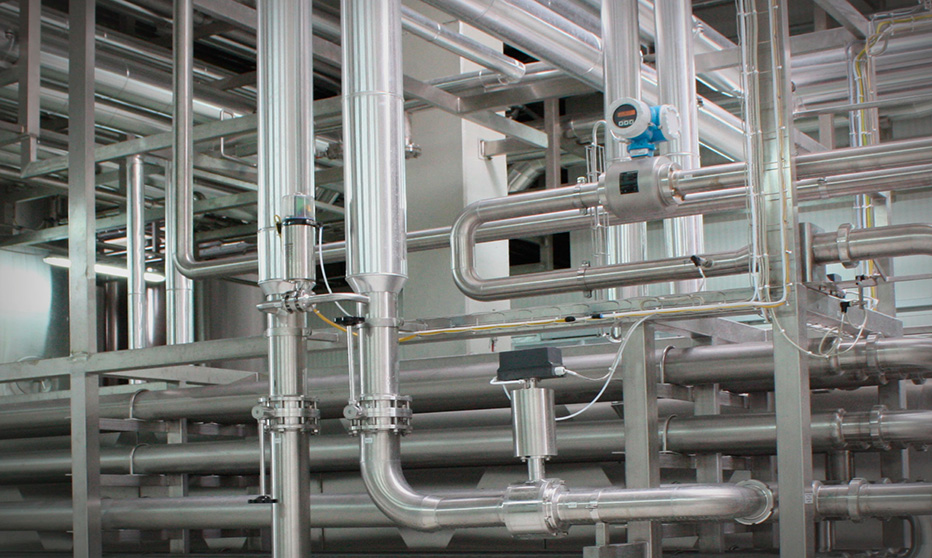
Innovation insights reveal that advancements in fabrication techniques have enhanced the usability of 316 stainless steel tubes, allowing for greater customization and efficiency.
As industries continue to evolve, the demand for high-performance materials like 316 stainless steel is expected to rise, driven by the need for sustainability and durability.
Consequently, 316 stainless steel tubes remain a preferred choice in various sectors, contributing significantly to operational success while meeting stringent regulatory requirements.
In addition to its notable corrosion resistance and mechanical strength, 316 stainless steel exhibits specific physical properties that enhance its applicability in various industrial contexts.
The fabrication and machinability of this alloy, including processes such as cold working and hot forming, are critical for achieving desired shapes and performance characteristics.
Furthermore, understanding the appropriate welding techniques for 316 stainless steel is essential for maintaining structural integrity in applications subjected to demanding environments.
The physical properties of 316 stainless steel tubes, characterized by their austenitic structure, include notable attributes such as high tensile strength, excellent ductility, and superior resistance to corrosion, making them ideal for demanding industrial applications.
Specifically, the alloy's composition, which includes molybdenum, enhances its performance against various corrosion mechanisms, particularly in chloride environments.
Key physical properties include:
Corrosion Resistance: Exceptional protection against pitting and crevice corrosion, vital for marine and chemical processing applications.
Temperatures: Maintains mechanical integrity at elevated temperatures, suitable for applications involving heat treatment.
Surface Finish: The ability to achieve a smooth surface finish aids in reducing contamination, which is critical in sanitary and food-grade applications.
In stainless steel applications, the comparison of 316 with other alloys highlights its superior performance, particularly where corrosion resistance is paramount.
Furthermore, understanding the effects of heat treatment can optimize its mechanical properties, making 316 stainless steel a preferred choice across various sectors, from pharmaceuticals to architecture.
A comprehensive understanding of the fabrication and machinability of 316 stainless steel is essential for optimizing its performance in various industrial applications. The selection of appropriate welding techniques, such as TIG and MIG, is critical for achieving robust joints, particularly when using compatible filler materials.
However, fabrication challenges often arise due to 316's work-hardening characteristics, necessitating careful attention to tool selection and machining tips to mitigate complications.
Cold working is beneficial for enhancing mechanical properties, allowing for effective forming and stamping, but it requires specialized equipment to maintain quality. Conversely, hot working should be performed within the temperature range of 1700°F to 2000°F (927°C to 1093°C), ensuring optimal malleability and minimizing stress concentrations.
When machining 316 stainless steel, operators should focus on appropriate cutting speeds and effective lubrication to prolong tool life and achieve desired surface finishes. The combination of these techniques underscores the importance of strategic planning in handling 316 stainless steel, ensuring that its exceptional properties are fully leveraged while minimizing fabrication and machining difficulties.
You may also like:
Precision Stainless Steel Tubing Fabrication Solutions
Cold working of 316 stainless steel significantly enhances its mechanical properties, such as yield strength and hardness, while allowing for effective shaping and forming in various industrial applications. This technique involves deforming the material at room temperature, resulting in improved dimensional accuracy and surface finish. The cold working benefits include increased durability, making stainless steel 316 an optimal choice for demanding environments.
Key advantages of cold working include:
Enhanced Yield Strength: Cold working increases yield strength, making the material suitable for heavy-load applications.
Improved Hardness: The process elevates hardness levels, which is critical for wear resistance in various stainless steel applications.
Versatile Fabrication Techniques: Cold working accommodates various techniques, such as rolling and stamping, facilitating the production of complex shapes.
Mechanical property comparisons reveal that cold-worked 316 stainless steel outperforms its hot-worked counterparts in terms of strength and hardness.
Furthermore, rigorous corrosion testing indicates that while cold working may slightly affect corrosion resistance, proper post-processing can restore the material's integrity, ensuring reliability in corrosive environments.
How does hot forming influence the properties and performance of 316 stainless steel tubes in various applications?
Hot forming techniques, applied within the optimal temperature range of 1700°F to 2000°F (927°C to 1093°C), significantly enhance the ductility and workability of 316 stainless steel. This process allows for complex geometries to be achieved while maintaining the material's essential corrosion resistance and mechanical strength.
Temperature effects during hot forming facilitate the reduction of yield strength, enabling easier deformation and shaping without the risk of cracking. However, specific tooling requirements must be met to withstand the elevated temperatures and pressures involved in the process. The choice of dies and tools is critical to ensure consistent quality and precision.
Post forming treatments, such as annealing, may be necessary to relieve residual stresses and restore ductility. This step further optimizes the mechanical properties of the material.
Welding 316 stainless steel requires specific techniques and considerations to ensure optimal integrity and performance of the material while maintaining its inherent properties.
The choice of welding techniques, such as TIG or MIG, is crucial as they allow for precision and control, essential for achieving strong, defect-free welds. Proper filler materials must also be selected to match the base metal characteristics, typically using ER316 or ER316L types to enhance corrosion resistance.
Key considerations include:
Joint Preparation: Adequate cleaning and alignment of the materials are vital for successful welds.
Post Weld Treatment: Implementing post-weld heat treatment can mitigate residual stresses and restore corrosion resistance.
Safety Precautions: Employing appropriate safety measures, including personal protective equipment and proper ventilation, is essential to protect welders from potential hazards.
Machining 316 stainless steel requires careful consideration of cutting parameters and tool selection to optimize performance and achieve desired surface finishes. An applications overview reveals that 316 stainless steel is extensively used in marine, chemical, and food processing industries, necessitating effective machining techniques tailored for such environments.
Tooling considerations are paramount; high-speed steel (HSS) and carbide tools are recommended due to their durability and performance metrics under the specific demands of machining 316. Utilizing appropriate cutting speeds and feeds reduces work hardening, while effective lubrication minimizes friction and enhances tool life.
Finishing processes are equally critical in achieving the desired surface quality. Techniques such as grinding, polishing, and electropolishing are employed to enhance corrosion resistance and achieve a smooth finish. Each finishing method should be selected based on the application requirements and the desired aesthetic qualities.
Ultimately, the successful machining of 316 stainless steel hinges on a comprehensive understanding of the material's properties and the implementation of strategic machining techniques, ensuring that the end product meets the rigorous standards of various industries.
The standard for 316 stainless steel tubes is typically defined by various international specifications that set the requirements for chemical composition, mechanical properties, dimensions, and manufacturing processes. Here are some of the key standards commonly used for 316 stainless steel welded tubes:
304 stainless steel is a versatile and affordable option for general applications, offering good corrosion resistance and formability. However, for more demanding environments, such as marine or chemical settings, 316 stainless steel provides better protection due to its higher resistance to chlorides. If welding is involved, 316L is the ideal choice, as it offers the same benefits as 316 but with improved weldability, thanks to its lower carbon content. The choice between these grades depends on the specific requirements of the application, including corrosion resistance, weldability, and cost.
| Category | 304 Stainless Steel | 316 Stainless Steel | 316L Stainless Steel |
|---|---|---|---|
| Chemical Composition | - Cr: 18-20% - Ni: 8-10.5% - Mn: ≤ 2% - C: ≤ 0.08% - Si: ≤ 0.75% - P: ≤ 0.045% - S: ≤ 0.03% | - Cr: 16-18% - Ni: 10-14% - Mo: 2-3% - Mn: ≤ 2% - C: ≤ 0.08% - Si: ≤ 0.75% - P: ≤ 0.045% - S: ≤ 0.03% | - Cr: 16-18% - Ni: 10-14% - Mo: 2-3% - Mn: ≤ 2% - C: ≤ 0.03% - Si: ≤ 0.75% - P: ≤ 0.045% - S: ≤ 0.03% |
| Density (g/cm³) | 8.00 | 8.00 | 8.00 |
| Melting Point (°C) | 1400-1450°C | 1375-1400°C | 1375-1400°C |
| Thermal Conductivity (W/m·K at 100°C) | 16.2 | 16.3 | 16.3 |
| Tensile Strength (MPa) | 515 | 515 | 485 |
| Yield Strength (MPa) | 205 | 205 | 170 |
| Hardness (Brinell) | 201 | 217 | 217 |
| Applications | - Kitchen equipment - Food processing - Architectural applications | - Marine environments - Chemical processing - Medical equipment | - Welded components - Medical implants - Marine equipment |
| Corrosion Resistance | Standard corrosion resistance | High corrosion resistance (especially to chlorides) | Higher corrosion resistance when welded |
| Weldability | Good | Good | Excellent (resistant to weld decay) |
| Price | Affordable | More expensive than 304 | More expensive than 304, similar to 316 |
You may also like
Stainless Steel Tube 304 Vs 316
In the realm of metallurgy, temperature effects significantly influence mechanical properties. Thermal expansion induces strength variations and ductility changes, while phase changes at critical temperatures can alter the integrity of stainless steel tubes, impacting performance in various applications.
Common welding techniques for 316 stainless steel tubes include TIG welding for precision, MIG welding for speed, laser welding for minimal thermal distortion, spot welding for localized joins, and friction stir for enhanced material properties.
Yes, 316 stainless steel tubes can be reused after fabrication processes, provided they meet industry standards. This promotes cost efficiency and reduces environmental impact, while ensuring structural integrity remains intact for subsequent applications.
Cold work significantly enhances the tensile and yield strength of stainless steel tubes through work hardening. However, it also leads to a reduction in ductility, necessitating careful consideration during design and manufacturing processes.
Surface treatments that enhance corrosion resistance of stainless steel tubes include passivation processes, surface coatings, and electrochemical treatments. These methods improve oxidation resistance, addressing environmental factors that can lead to degradation and ensuring long-term material performance.
In conclusion, the 316 stainless steel tubes mechanical properties, including yield strength and tensile strength, position them as a preferred choice in demanding industrial applications.
Notably, 316 stainless steel exhibits a minimum tensile strength of 580 MPa, highlighting its robustness.
This material's exceptional resistance to corrosion and ability to withstand high temperatures further enhance its applicability.
Understanding these properties enables informed decisions in selecting suitable materials for various engineering challenges, ultimately ensuring optimal performance and longevity in service.
